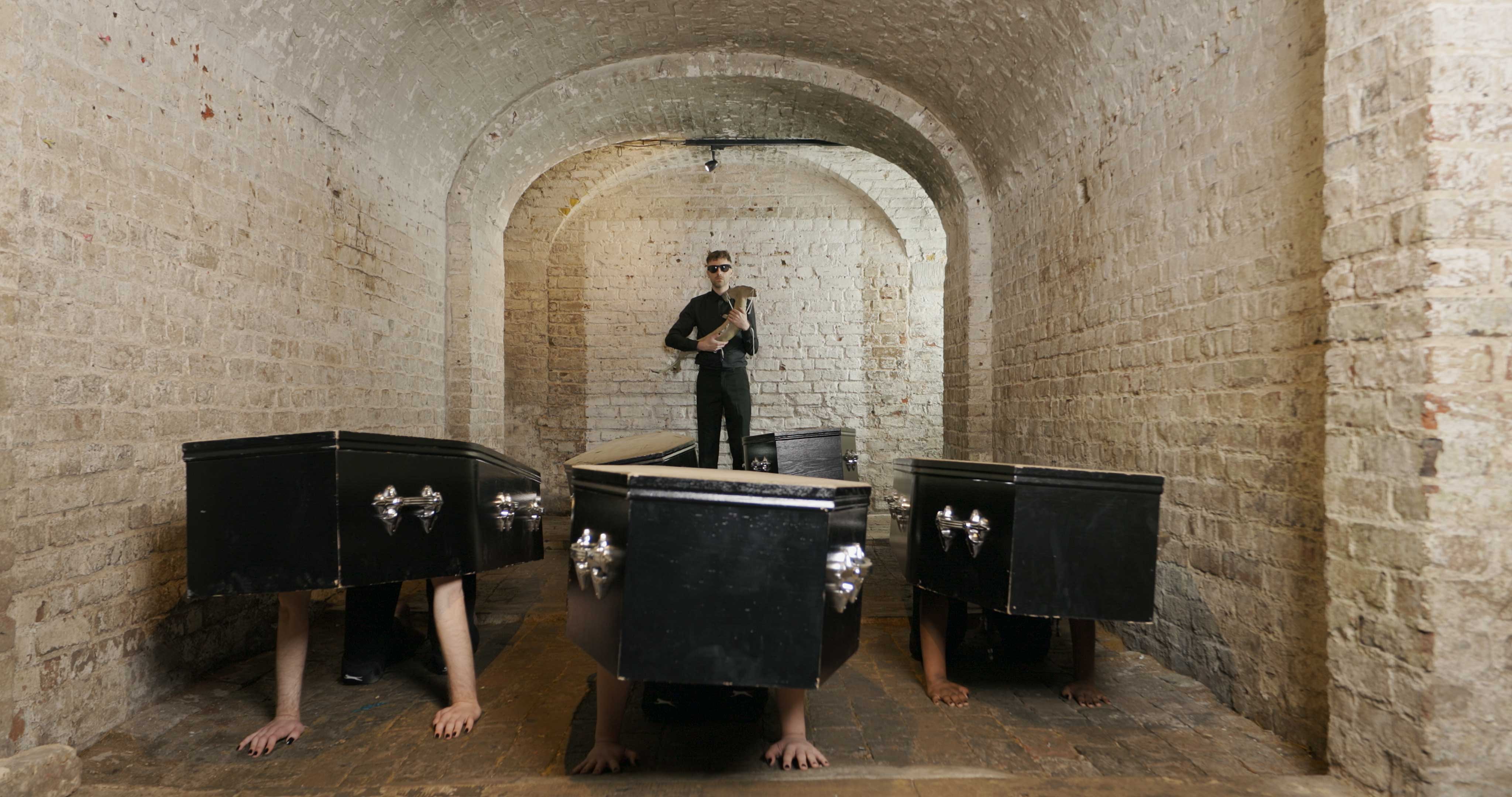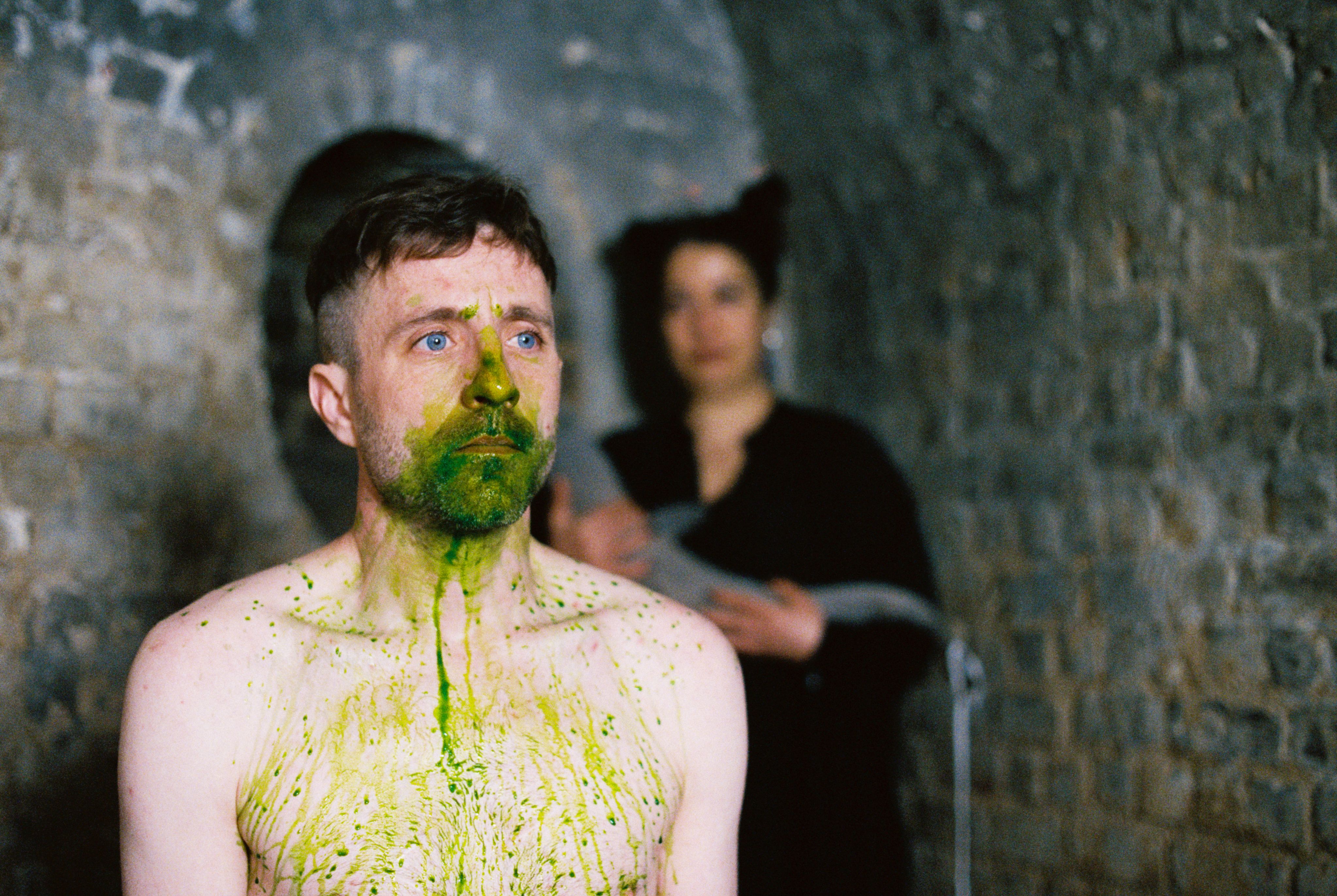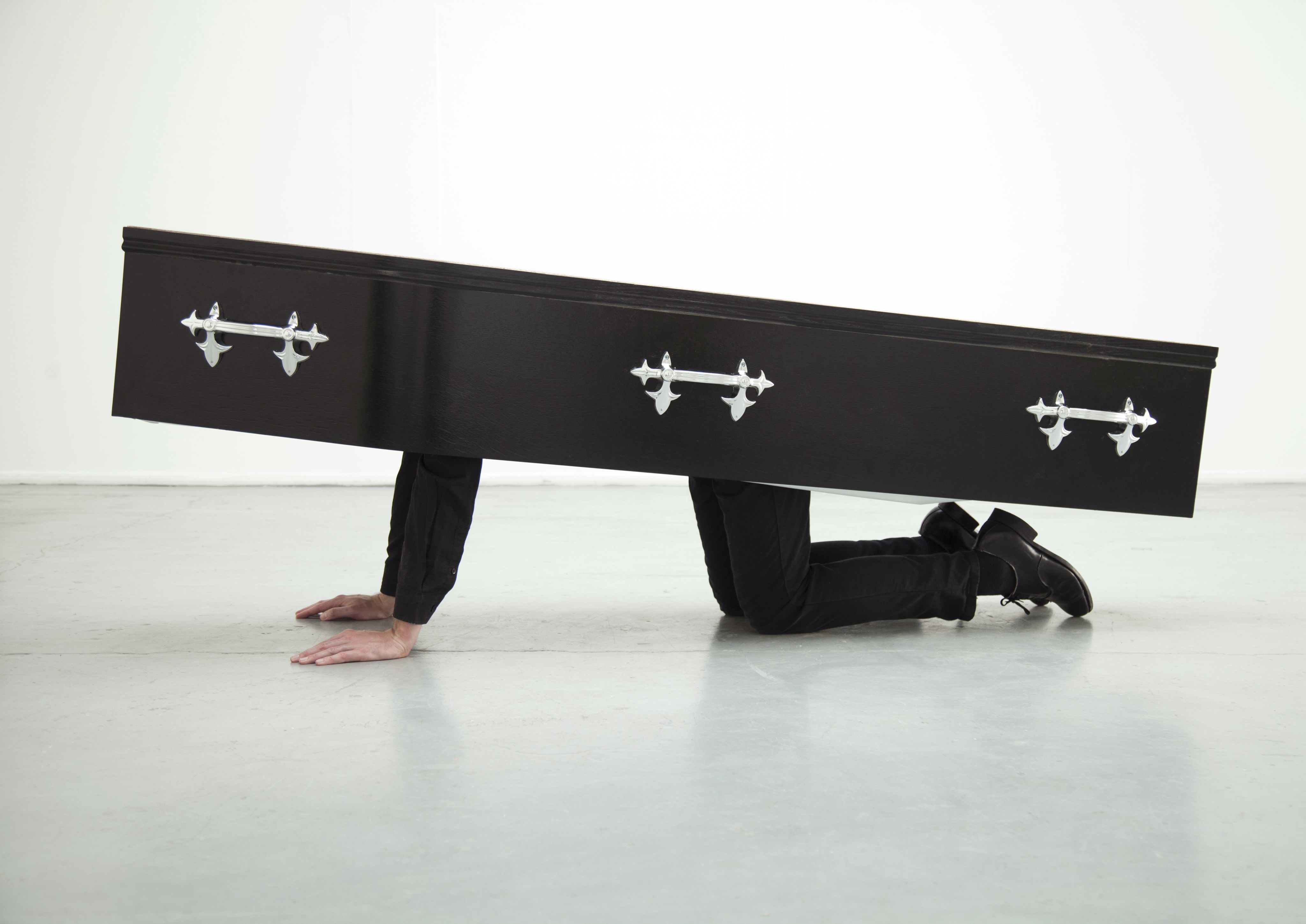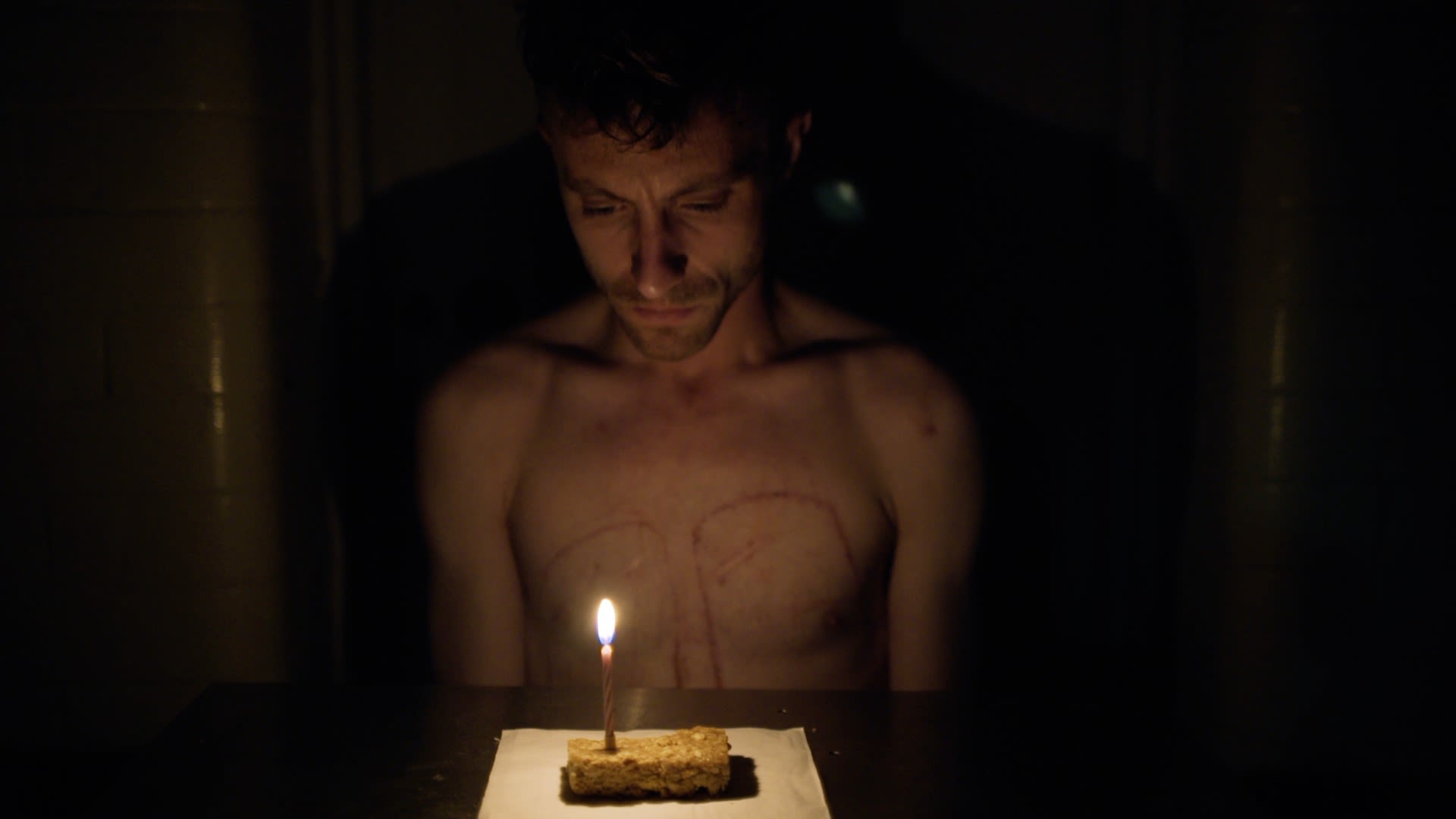Beyond the Breath: A Q&A with Martin O’Brien
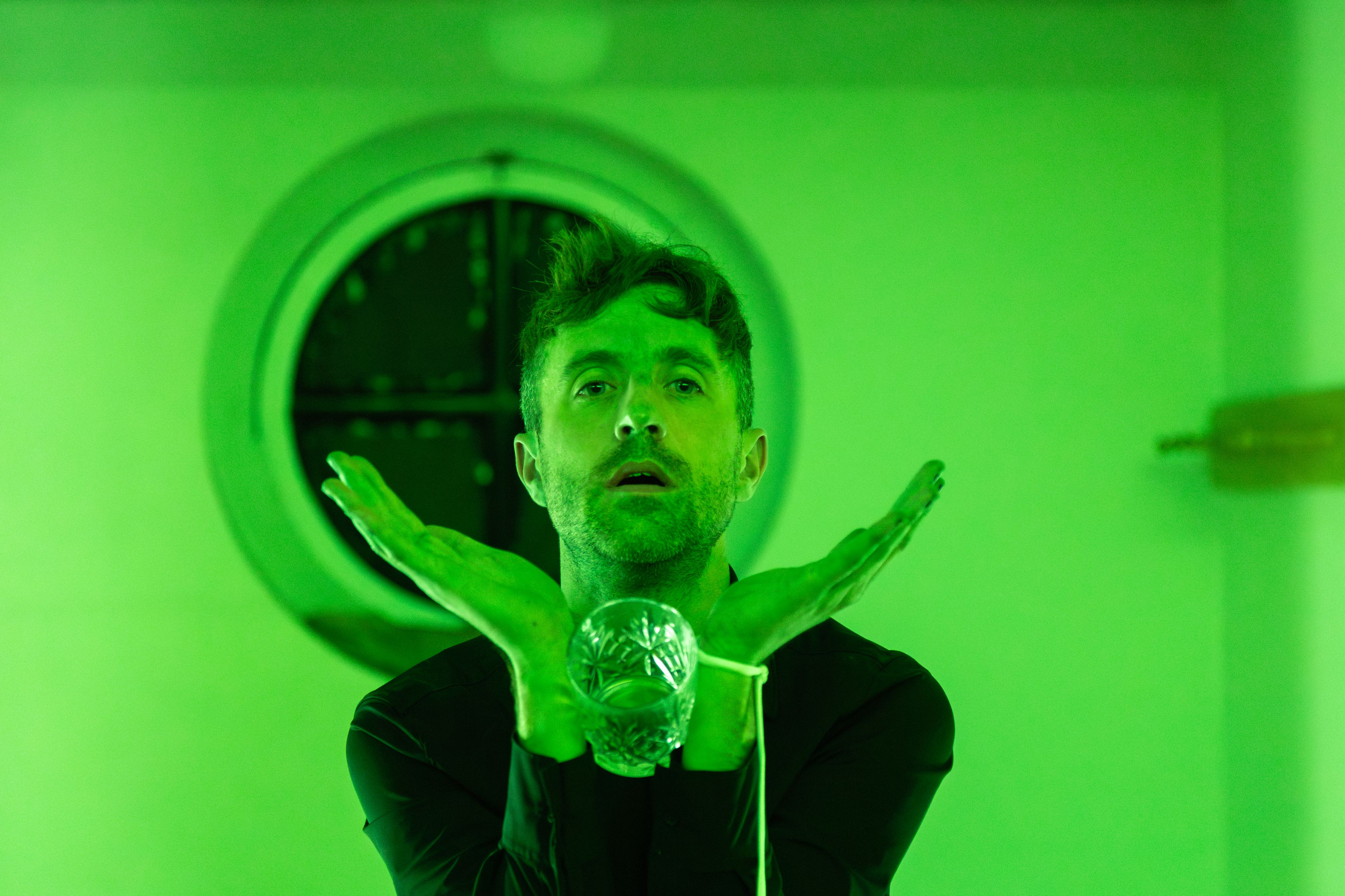
by Sophia Carmen Salganicoff
According to performance artist Martin O’Brien, he’s living in “zombie time.”
Since his childhood cystic fibrosis diagnosis, he has surpassed his life expectancy several times over. Over the years, his work has incorporated mucus, coffins, and symbolic power of breath—all in a direct conversation with death. In The Last Breath Society (Coughing Coffin), he invited friends and strangers alike to gather together in a coffin-filled room for eight days. This performance delves into mortality through endurance and pain, framing waiting as survival. Through this and similar projects, O’Brien builds a unique dialogue between his body and the audience.
Here, O’Brien discusses his creative process, recurring motifs in his work, and the impact of audience interaction and collaboration on his performances. Learn more at his Visiting Artist Program lecture Monday, November 11, 6:00–7:30 p.m., presented in partnership with SAIC's Wellness Center.
Martin O'Brien, An Ambulance to the Future, 2023, video still, Studio MaBa
Martin O'Brien, An Ambulance to the Future, 2023, video still, Studio MaBa
Your work often addresses themes of illness and endurance. Could you elaborate on the recurring motifs and themes in your performances?
My work was always about illness and it was always about life and death, but it was originally more concerned with the idea of medicine. The idea of living on, and physical endurance. Since 2017, my work has become more focused on death itself and exploring immortality.
I was past the life expectancy of someone with cystic fibrosis in 2017, and leading up to that, I started to playfully think about the idea of the zombie as this metaphor. What does it mean to live on when you were supposed to have died?
The coughing, the bringing up of mucus and the mucus as the material to work with in the performances, is also a throughline. It came out of necessity, as I would do physically demanding things and then cough mucus up. This material became integral to my work starting with my 2011 piece, Mucus Factory.
Another motif is breath and breathing. I’ve explored how to make breath visible and frame it as an image in my work. Around 2012, I began using a rebreather, a hood that inflates with exhalation and sticks to the face with inhalation, letting only a tiny bit of air in with each cycle. This device was an attempt to make breathing—a process we all engage in—more tangible and visual.
Martin O'Brien, An Ambulance to the Future, 2023. Photo: Zack Mennell
Martin O'Brien, An Ambulance to the Future, 2023. Photo: Zack Mennell
What does your day-to-day studio practice and project process look like?
It’s a lot of writing. Sometimes writing is just processing, but it really helps me figure out the early stages of developing the colors, visual vocabulary, and imagery of my performance. I never rehearse the works, but I do try out singular images after writing. ‘What would that look like if I did that with the coffins?’
I am also in my studio asking, ‘How do these things work as materials?’ When I did Last Breath Society (Coughing Coffin) I spent time messing about with the coffins so that I knew when I got into the performance I would be confident.
The performance is rooted in information I can pull on from my studio practice: I know if I stand a coffin up and kick it here, it will wobble, but if I kick it there, it will fall over. You work all of that out before so you’ve got complete control over the materials and you know them intimately during the performance.
Martin O'Brien, The Last Breath Society (Coughing Coffin), 2020. Photo: Holly Revell
Martin O'Brien, The Last Breath Society (Coughing Coffin), 2020. Photo: Holly Revell
The materials that you’re working with, specifically bodily fluids, often have living organisms at play. Can you talk a little bit about the agency of your materials?
When it comes to bodily fluids, they’re uncontrollable. Mucus is the one I most commonly work with, and it is so unpredictable. Some days you’re just not producing it and you’re not coughing it up. I’ll always be able to get some because my lungs are so full of it, but some days, it’s so hard and I’m beating my chest for ages and coughing to try and get it. Even when it comes, the thickness varies, so if your chest ain’t playing ball, then it changes the whole performance.
That relates to the agency of illness, as well. I talk about the cough as this voice of illness. It interrupts, you can’t control it. If you need a cough, you cough. You can’t hold that in. A cough demands its right to be heard, it breaks through, it pierces. Whatever you’re doing, starting an exam or at the table at a posh meal with some people, it doesn't matter. If you need to cough, it comes.
How do you view the role of performance art in discussing themes of mortality and illness?
I think with performance art, I slip into a kind of romanticism. There is something about being in this space with a body, watching a body basically die in front of you. It allows for a direct confrontation with the body and its processes, which can be profoundly different from other art forms. The presence of a live body, its decay, and its vulnerability bring an immediacy and intensity to the subject of mortality.
One thing that I’ve really been thinking about over the last couple years is the idea of art as posthumous. After I die, I really want my body to become a work of art, or to allow for a work of art to continue after my death. That could become the next stage of zombiedom. ■
Martin O'Brien, Until the Last Breath is Breathed, 2018, video still. Music and videography by Suhail Merchant
Martin O'Brien, Until the Last Breath is Breathed, 2018, video still. Music and videography by Suhail Merchant

